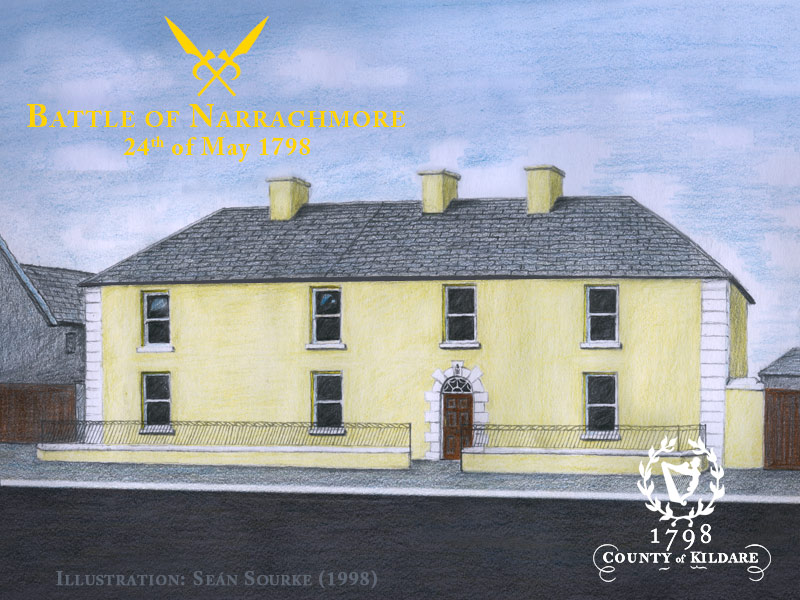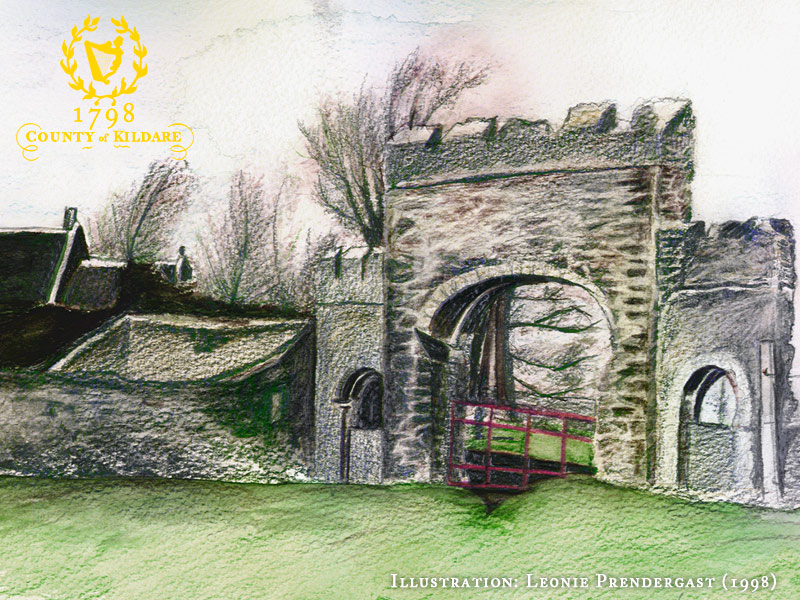Rebellion Towns & Villages

Narraghmore
On the morning of the 24th of May nine loyalists under John Jefferies, a yeoman sergeant, repulsed a rebel attack on Narraghmore courthouse led by Malachi Delaney and James Murphy, the attack lasted two hours. Afraid that their position was untenable, the loyalists proceeded to Jefferies home but were driven out when the rebels set the house on fire. Three loyalists were killed and six (including Jefferies) were taken prisoner by rebels who had rallied under Daniel Walsh.
Lieutenant Eadie and the detachment from Ballitore routed a party of rebels in the woods near the town where 5 loyalists had been hanged. Later near Fonstown, troops under Major Montresor routed the rebels who retreated to Ballitore. Jefferies was lodged in Ballitore but escaped to Athy. Pushing on to Red Gap Hill, Montresor was joined by Captain Rudd and Lieutenant Eadie. They were attacked by around 3,000 rebels. Seven of the troops and about 200 rebels were killed. Eighteen of the Narraghmore yeomanry who fought with the rebels were shot.
At Dunlavin on the same day, suspected United Irish prisoners were executed – 9 of them yeomen from Narraghmore.
In the early hours of Sunday May 27th Colonel Campbell marched from Athy to Ballitore. On his way he destroyed the mansion of Colonel Keating at Narraghmore. Keating, a liberal, was suspected of complicity with the United Irishmen.
John Jefferies was murdered in Athy in June. The rebel leader Daniel Walsh was later hanged by the military.

Rebellion Towns & Villages
Naas | Ballymore | Old Kilcullen | Knockaulin | Narraghmore | Ballitore | Athy | Monasterevin | Kildare Town | Rathangan | Gibbet Rath | Clane | Prosperous | Timahoe | Ovidstown | Surrender
